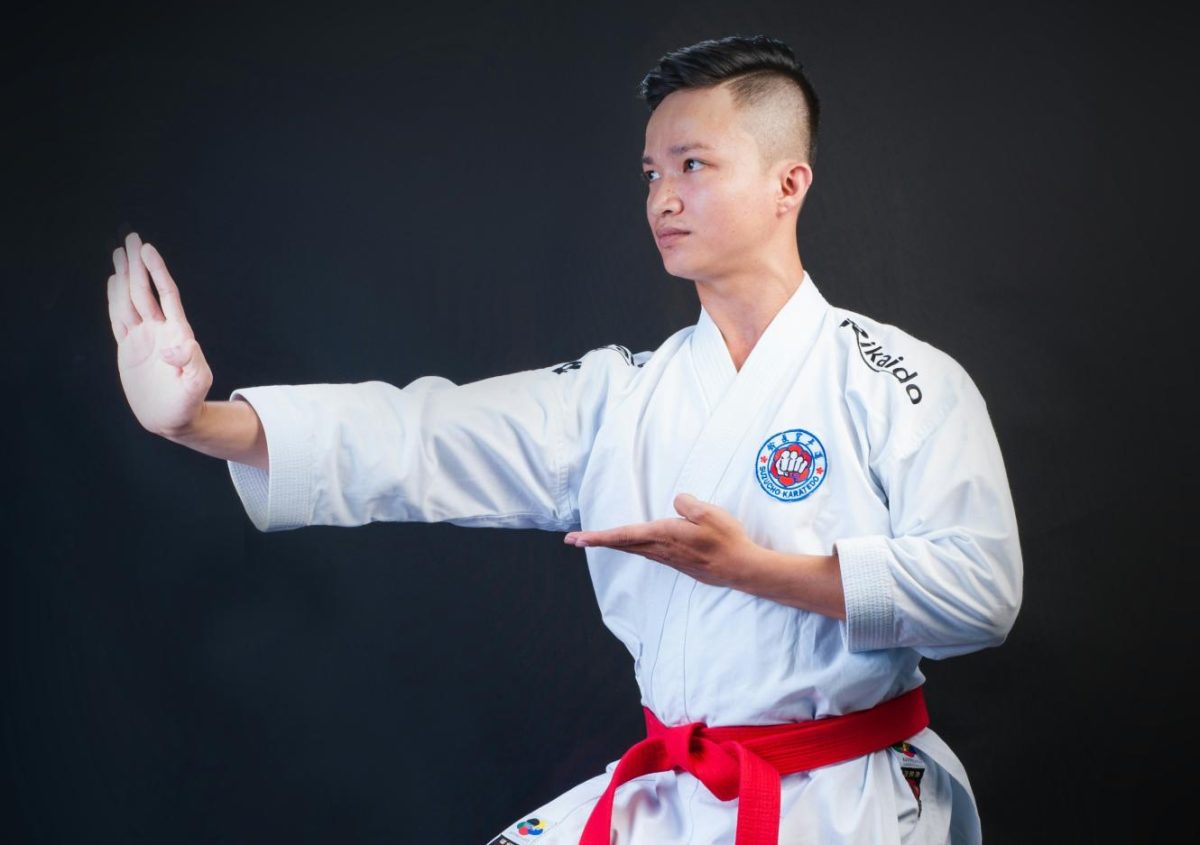Clarification: February 27
The sociology professor referenced in the article is a university staff member who teaches part time. He is an adjunct who does not have full-time faculty status.
On Wednesday, Feb. 8, my sociology professor began class by addressing his departure from Biola. He would still teach our class for the remainder of the semester, he reassured us, but had to cancel class the week prior to move out of his office on campus. Many such conversations took place in classrooms at the beginning of February. Students were not prepared to greet and say their goodbyes to their professors within the first month of school, or for their majors to be dissolved just four months after enrolling.
Cuts like this are the tangible results of declining enrollment, a trend that is sweeping through even the Ivy Leagues.
Nevertheless, this semester’s imposed changes warranted more proactive communication and transparency from Biola administrators than was provided. Biola students are paying customers at their university, so significant changes to faculty, majors and budget cuts pertain to them. Students’ day-to-day lives and future livelihoods rely on this institution. It is crucial to the overall health of the school that the students’ experiences of these changes are at the forefront of Biola’s consideration.
TRANSPARENCY GARNERS TRUST
Student Government Association President Christie Macris shared her thoughts about recent changes, highlighting the importance of university vulnerability in an email statement.
“The best thing Biola can do to stay on its feet is continue to have open communication with students about the difficulties and be vulnerable about the areas that they could use assistance in,” Macris said. Considering Biola’s historical context, Macris is right – when Biola has asked for support from students, donors, and alumni they have received it.
Associate Professor of Interdisciplinary Studies, Dr. Aaron Adams, believes it is important for students to not only be aware of university-wide changes, but also to voice their concerns. Adams currently facilitates these conversations with his own students following the dissolution of the interdisciplinary studies major at the beginning of the semester.
“It’s good for students to be a part of these conversations and exercise their membership in the community,” said Adams. “What [the Chimes is] a part of, looking at all these different things, is a good and worthwhile process.”
Former Biola Professor of Sociology Dr. Richard Flory, the current executive director of the Center for Religion and Civic Culture at University of Southern California, confirmed Adams’ and Macris’ assertions.
“It seems to me that a certain amount of transparency is necessary in order to garner the amount of trust you need to keep going,” Flory said.
STUDENTS ARE SURPRISED AND AGGRIEVED
Graduating senior and B.F.A. student Peyton Dochterman, whose concentration is in photography, expressed her frustration following the loss of her program in an email.
“Personally, I feel extremely angry with the institution as a whole for the recent cuts that have been made,” said Dochterman. “This change to the art department solidifies my desire to graduate and move on from Biola.” Dochterman chose Biola with the intention of studying photography. “If this had happened in my earlier years of studying at Biola, I believe I would transfer to a school that prioritizes all areas of art,” she said.
Biola chose to dissolve the photography concentration along with the M.A. in public relations and strategic communication, the B.A. in organizational management, digital journalism and media, communication studies, interdisciplinary studies, entertainment business, early childhood communication, applied public health and biblical ministries. These sudden changes came as a shock to students and faculty because all these majors welcomed new students in the fall semester.
The changes span multiple areas of the Biola. Alpha’s conversion from an all-girls dorm to a co-ed dorm will bring about a shift in campus culture for better or worse, and the Bible credit reduction option for certain majors, while apt, is another significant departure from tradition. Even changes that could end up being positive will affect Biola’s ethos. All cutbacks and rearrangements were announced within the span of just two months. The haste with which these changes took effect, combined with the lack of adequate communication from Biola administration about why they were necessary, has left students feeling confused and disheartened.
First-year student Ethan Arredondo shared his perspective as an art major with a photography concentration. “The fact that my major no longer exists is kind of an odd thing to have to process considering I am in the middle of completing it as I answer these questions,” he said in an email statement. “Moving forward, I think it will impact my ability to have relationships with my professors because I have been told that the remainder of my required major courses will be taught by adjuncts.”
A full-time photography professor was hired this past fall, and four months later she was notified that her contract would not be renewed for the following year.
“I think photo is pivotal to the art department; nearly every school that has an art department offers a photo program,” Dochterman said. “It makes no sense to me that Biola has invested all this money into the building of the lighting studio and darkroom just for the program to dissolve in the years to come.”
Arredondo and Dochterman’s feelings are justified, and students like them are processing complex emotions in the wake of changes like these.
“I think a lot of us [art students] feel neglected by the school as a whole,” Arredondo said. “Animation was just added as a brand-new concentration this year by the art department, and it is sad to feel like we [the photography concentration] have been replaced. Coming into a department that feels like it is already quite confused with itself, and then finding more confusion means that overall, we as students don’t feel well-represented as a part of Biola’s community.”
THE BROADER PICTURE OF EDUCATION IS A WINDOW INTO OUR FUTURE
Biolans are ever aware of how their university differs from other, more “secular” options for higher education: the mandatory Bible minor, chapel credits and community guidelines are just a few of the seemingly unique elements of collegiate life that Biola has to offer. But some suspect that those same attributes no longer set Biola apart from other universities.
“Taking 30 Bible credits doesn’t necessarily make us different anymore, because you have the option to do that at a secular university, it just isn’t required,” Biola Professor of Sociology Dr. La Dawn Johnson said. “Combine that with the fact that most private Christian universities are more expensive [than public universities], how can we ever compete?”
In January, 2023 the Education Data Initiative reported that the average student borrows over $30,000 to earn their degree. The average federal student loan debt is $37,574 per borrower, and private student loan debt averages $54,921 per borrower. The Education Data Initiative ascertains that based on previously recorded average payments, the average monthly student loan payment is an estimated $460. According to Forbes, the projected average starting salary for the class of 2022 ranges from $50,681 to $75,900, depending on their major; in addition to this, Forbes reports that economists predict a 70% chance of economic downturn in 2023, which will result in higher unemployment.
The tectonic plates of Western higher education are shifting to accommodate lower enrollment and the massive toll that inflation, student loans and job scarcity will take on young adults in the 21st century. Subsequently, liberal education as a whole is drifting further away from the arts and humanities — more students find themselves choosing between a vocation that they are passionate about and one that will help them cover their monthly student loan payment. This is one possible explanation for why majors within the arts and humanities have taken the brunt of Biola’s budget cuts.
Because of plummeting enrollment, American universities are making significant cuts and changes to their staff, faculty and programs. According to an article published in The New York Times in 2020, “By one estimate, the pandemic has cost colleges at least $120 billion, with even Harvard University, despite its $41.9 billion endowment, reporting a $10 million deficit that has prompted belt tightening.” More recently, Cal Matters reports that “between fall 2020 and fall 2022, the equivalent of roughly 24,000 currently enrolled undergraduates disappeared from the Cal State system.”
CAN BIOLA ADAPT TO SURVIVE?
Every university will need to adapt in some way to account for dwindling enrollment. Biola has a set of challenges that are unique to private Christian institutions because it has social and cultural obligations to present itself to appeal to its Christian demographic. At the same time, schools need to make changes that reflect their student body. For instance, many young Christians today tend to have more nuanced views of topics such as LGBTQ+ rights and gender politics than they did a decade ago, but ideologically Christian institutions have not evolved in the same way.
There are many questions to be asked regarding Biola’s future as an ideological institution, but one stands out especially: will Biola adjust to appeal to a more diverse array of students in the hopes of increasing enrollment, or will it remain loyal to its staunchly conservative origins?
Dr. John Hawthorne, a retired Christian sociology professor with four decades of experience in Christian higher education and administration, spoke on this matter.
“To make a change that reflects the current students would be to go against the wishes of the higher-ups. At the end of the day if you have a choice between your market and your tradition, the market has to win,” Hawthorne said.
There is a market for Christian higher education, and it is not going away any time soon. That market, however, burgeons with over 140 private Christian institutions, all of whom present similarly conservative tenets.
Flory echoed Hawthorne’s point and took it a step further.
“Biola’s biggest fear has historically been secularization,” Flory said. “I argue that that won’t happen because the donor base is so small — it cannot happen. They would have to expand their donor base [in order to secularize].”
“If this is where Biola wants to stake their claim in light of these social changes, how are they going to make that happen, and how are they going to be transparent about what they intend to do?” Hawthorne asked.
Hawthorne and Flory’s observations may be able to help students step back from their microcosm of a university and see themselves as a part of the broader narrative of how Christian higher education is changing.
LEADERSHIP MUST CLARIFY AND EMPATHIZE
Regarding the budget cuts and students’ questions, Macris offered constructive criticism.
“I think for Biola to have a healthy future they are going to need to revitalize their values,” Macris said. “As we are facing so many new challenges after the advent of COVID, Biola has to change a bit to stay afloat but that isn’t inherently a bad thing. Personally, I think the school should clarify their unique theological identity and refine their integrationist approach so that prospective and incoming students will have a clearer picture of what the school is actually like.”
The lack of proactive communication from administrators regarding the reasoning behind all these changes indicates that the intensity of student experiences is being downplayed. There are reasons for the programs merging, majors dissolving and faculty cutbacks that the community needs to know to collectively process these changes.
Missing the opportunity for a university-wide conversation will be more fuel for rumors and resentment. With the inevitable change that the coming years will bring for Biola, it is of the utmost importance that the university solidifies its ideological identity and prioritizes honest communication with its student body.












